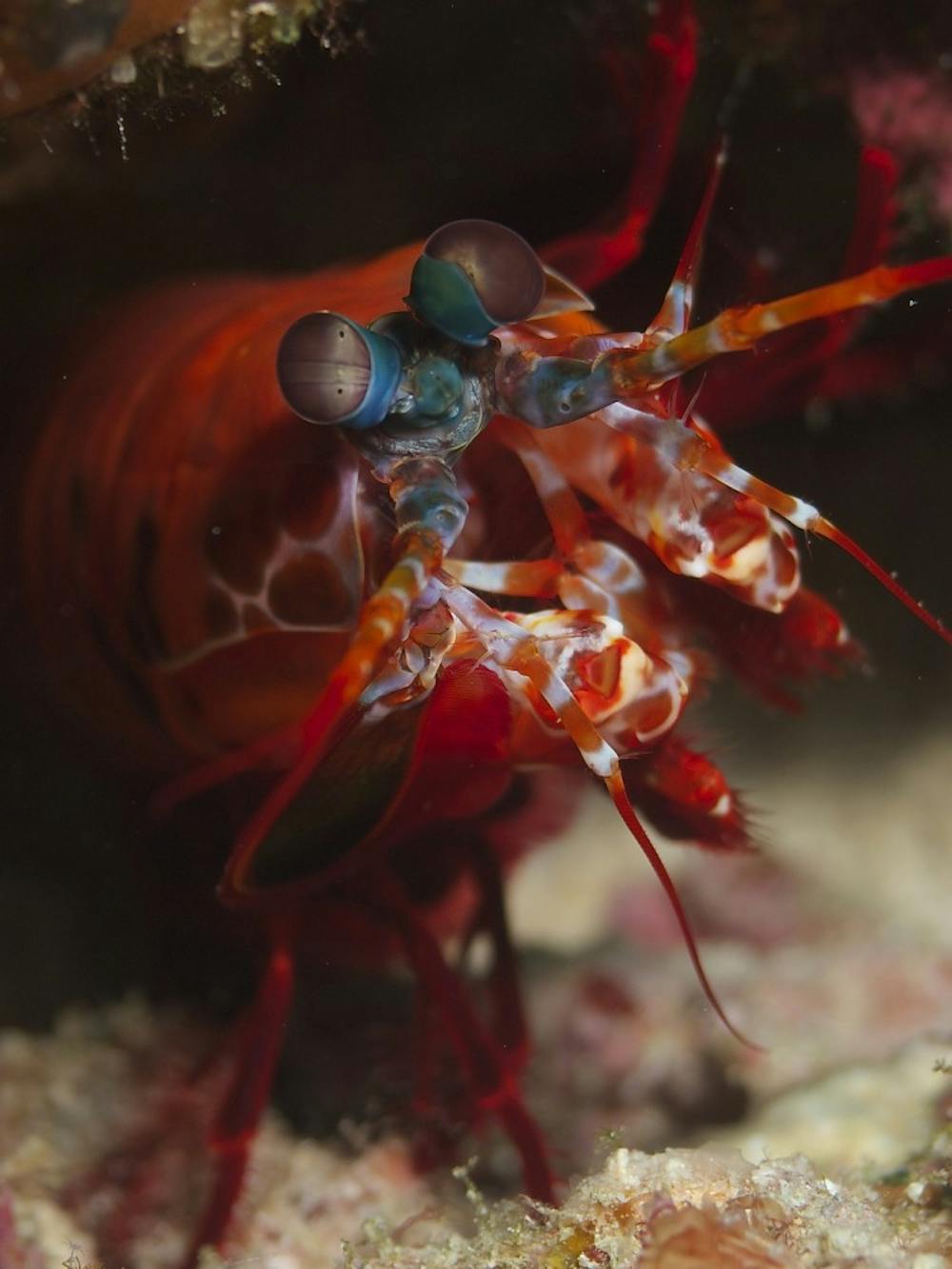
The mantis shrimp, these poets claim, is able to see a beautiful world of vast colors that the human eye cannot even dream of perceiving. Humans have three types of color photoreceptors. Mantis shrimp have 12 different types of color photoreceptors. Wow! The world of color that the mantis shrimp can see must be astounding!
“No other animals in the world sees color like the mantis shrimp,” an article in Business Insider proclaims.
Some artist online even made a comic about the mantis shrimp, yibby yabbering on about “Why the mantis shrimp is my new favorite animal,” because the shrimp is somehow able to see a whole new realm that we boring humans cannot.
Let me make this clear up front: All this yibby yabbering about the mantis shrimp’s color vision, unfortunately, is decidedly untrue. As someone who was once hooked on this myth, it is my job to inform you loyal readers the correct fundamental principles of visual neuroscience that debunk this myth.
First let’s talk about color photoreceptors. These are cells that are located in your retina. More precisely these cells are called cones, and their ability to detect color depends on a protein called opsin. When light strikes an opsin, the protein changes its shape in the cell membrane, translating the light energy into cellular changes that communicate to the brain information about the light. Humans have three types of cone opsins (nicknamed blue, green and red cones), and the difference between these opsins is the color of light to which the opsin is most sensitive.
It is indeed true that the mantis shrimp has a lot more types of color photoreceptors than humans do (12 versus three). Yet, the mantis shrimp does not have better color vision than we do.
A study published in Science by Hanne H. Thoen and colleagues in January of 2014 showed that mantis shrimp are actually worse than we are when it comes to discriminating differences in color. In other words, the fact that the mantis shrimp has a greater variety of color photoreceptors does not endow the crustacean with better color vision. Why is that?
As it turns out, signals from color photoreceptors are actually quite ambiguous. In fact a single cone type responds not only to changes in the color of light, but also to changes in the intensity of light. Thus when a cone is activated by light it cannot tell which change has turned it on: Is it an alteration in the wavelength of light or in the intensity of light?
Due to this ambiguous signal, you need not only a variety of cone types that are sensitive to different wavelengths of light, but also the neural circuitry to compare signals across different types of cones. For example when yellow light is perceived by the human eye, all three types of cones in the eye will be activated.
What’s different will be the strength of their signals. Green and red cones will be strongly activated, whereas the intensity of signals from blue cones will be weakly activated.
As a result, because humans have the neural circuitry to make such comparisons, we can see color. Mantis shrimp, unfortunately, do not have such complex neural circuitry, and therefore their color vision is more limited than ours.





